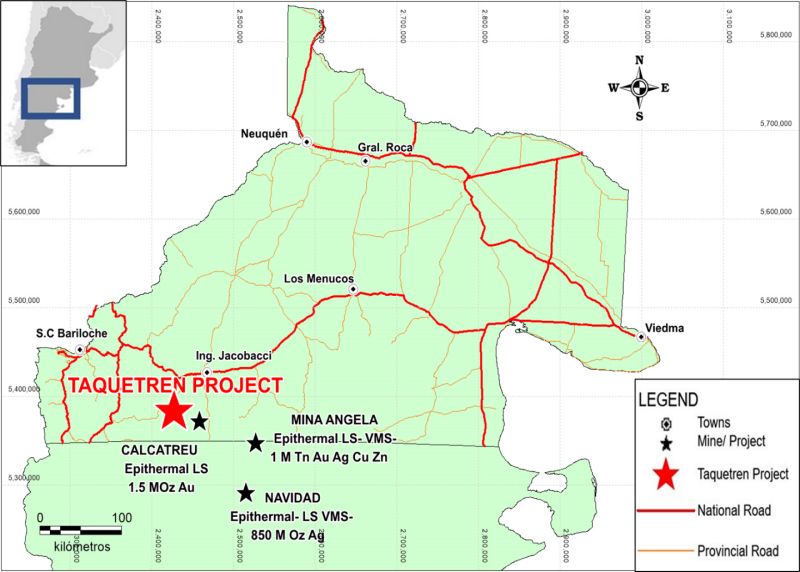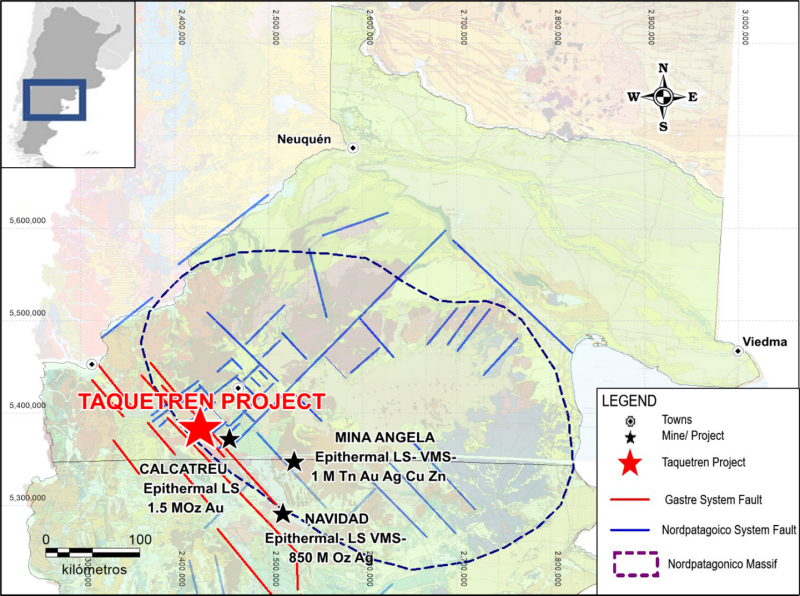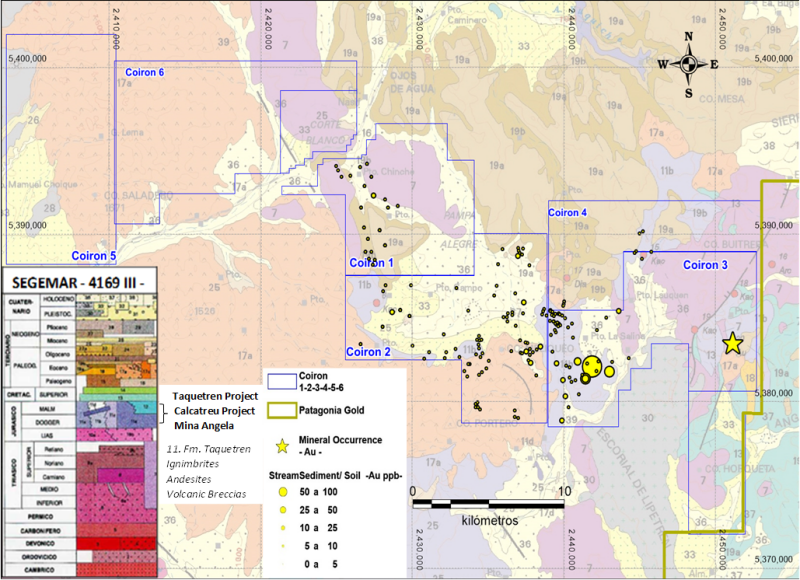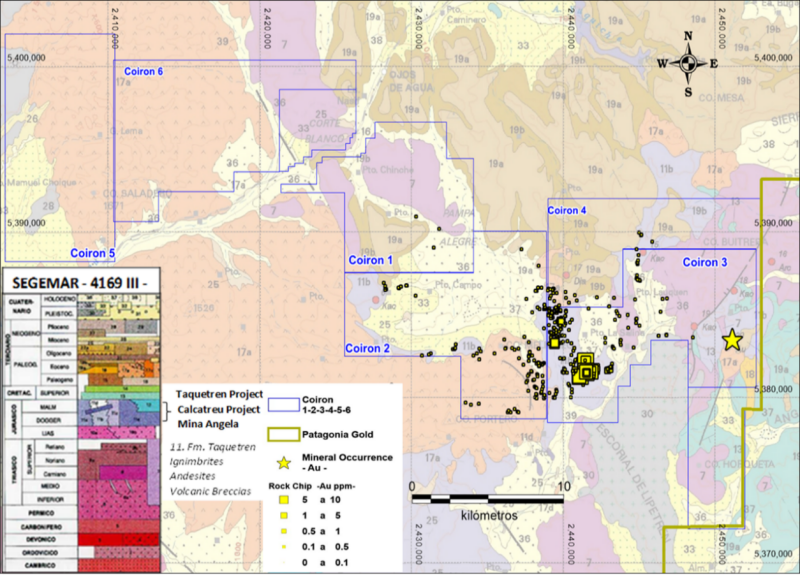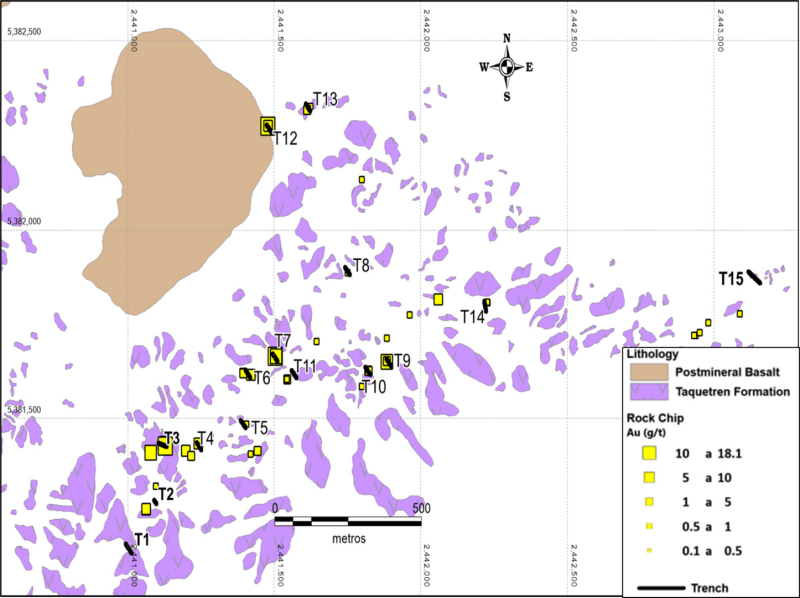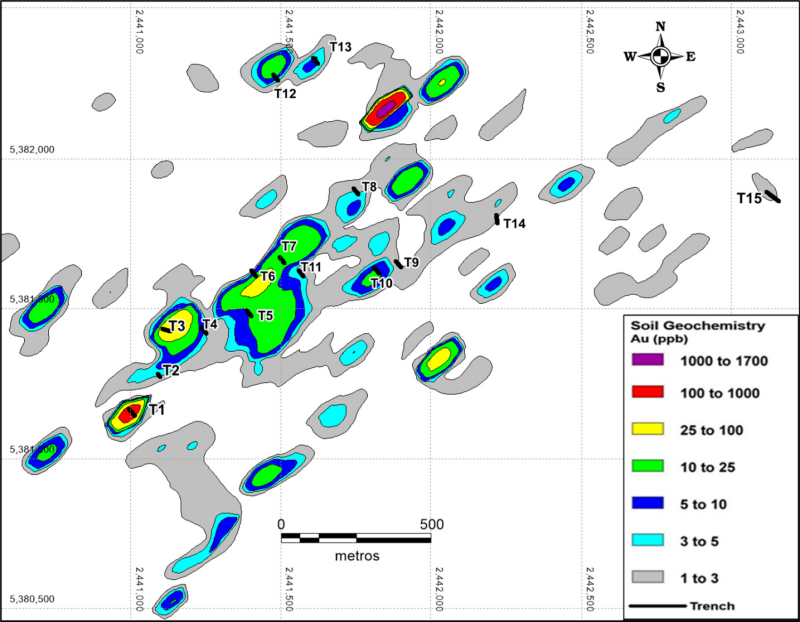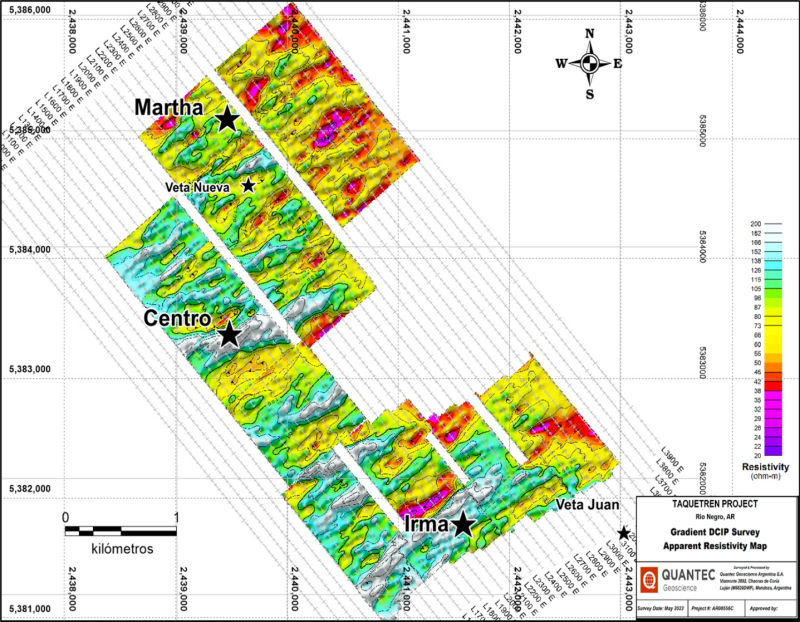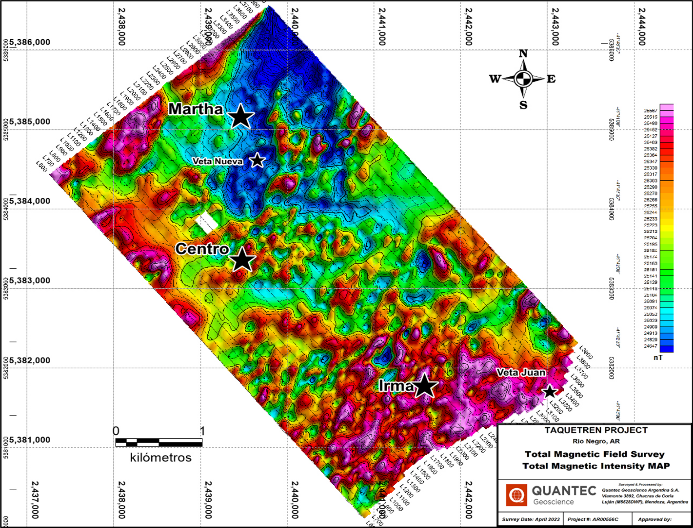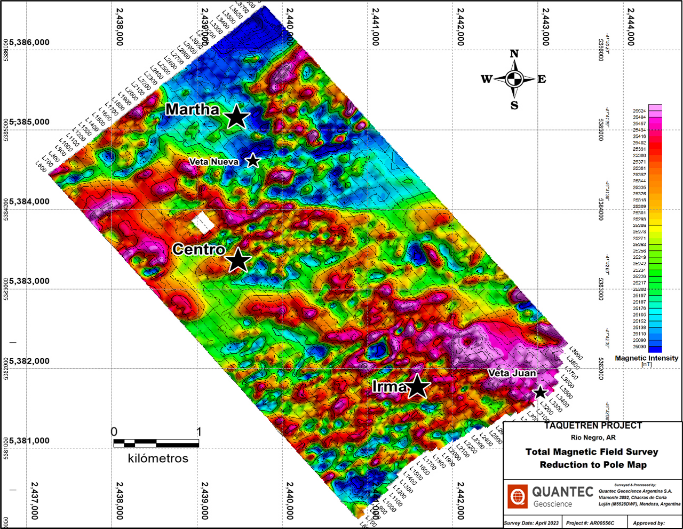Archive
Project Update, Taquetren, Rio Negro, Argentina
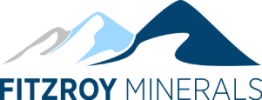 | |||||||||
 |  |  |  | ||||||
Vancouver, British Columbia – TheNewswire - September 19, 2023 - Norseman Silver Inc. (TSXV:NOC) (OTC:NOCSF) (“Norseman” or the “Company”) is pleased to announce sampling results and an update on the Taquetren Project, Rio Negro, Argentina.
Phase 1 work at Taquetren, this year included completing seventeen trenches and magnetometry, gradient-array IP and resistivity geophysical surveys. The work was spread across three prospects, Irma, Martha, and Centro, which are located within 4 km of each other.
At Irma, the analytical and field results indicate a sheeted complex of gold-bearing, locally discontinuous veinlets and veins covering an area of approximately 1.8 km by 0.5 km, oriented northeast-southwest.
Phase 2 trenching and geophysics to generate drill targets at Irma and Centro is proposed for Q4 2023.
Highlights:
-
Rock chip results: 18.10 Au g/t, 13.43 Au g/t, 12.22 Au g/t, 11.48 Au g/t, and 9.92 Au g/t
-
Trench intersections include 5.2 m @ 1.8 g/t Au; 3.4 m @ 3.8 g/t Au; and 3.6m @ 1.0 g/t Au
-
Five clear resistivity anomalies are aligned with the vein and structural fabric orientation
Sean D. Hurd, President and CEO, commented: “Cost-effective, grass-roots exploration has demonstrated widespread gold occurrences at Taquetren. There is an encouraging mix of high grade gold in veins as well as mineralization in silicified wallrock and veinlet clusters. A potentially significant NE-SW mineralizing system has been identified.
Soil geochemistry and trenching are proving to be good and low-cost exploration tools. In addition, the geophysical survey identified five large resistivity anomalies consistent with buried veining or silicification typical of large epithermal gold systems seen elsewhere in Argentina. Gold mineralization at Taquetren is variable along strike and further work is needed to vector in on priority targets.
The aim is for Phase 2 work in 2023 to define targets that could be drill-tested in 2024. Additional trenching will focus on in-fill work. Extra geophysics could help to define a depth component to the five main resistivity anomalies.”
Taquetren, Rio Negro, Argentina
The Taquetren project encompasses an area of close to 59,000 hectares (Ha) and is located in the Navidad-Calcatreau Mining District, in SW Rio Negro Province, and approximately 30 km north of Chubut Province (see Figure 1, below). Accessed by high quality and well maintained paved and gravel roads. This under-explored district hosts several deposits, including Navidad, one of the largest silver deposits in the world (M&I: 632M Oz Ag contained in 155.2 Mt @ 127 g/t Ag, 0.85% Pb, 0.05% Cu, 150 g/t Ag Eq).
|
Figure 1. Taquetren Location Map |
|
|
Taquetren covers 58,667 hectares in six separate prospecting permits (Cateos). Most of the work to date has been focused on Cateos 1-4. Cateos 5 and 6 are more recent additions to the portfolio.
Work Summary
Initial reconnaissance mapping and sampling generated priority areas for follow-up work. The best results came from an area of long low hills where three prospects named Irma, Centro, and Martha have been defined. The area is characterized by thin soil cover (20-40 cm) and little oxidation of the underlying rock. Irma is poorly exposed and the extent of mineralization is gradually being revealed by systematic exploration. In 2011 a nearby volcanic eruption deposited ash in the region. Accumulations of ash (10-30 cm) remain in areas sheltered from the wind.
Robust rock chip and soil geochemistry results, and geological mapping, outline clear zones of anomalous mineralization. Subsequent activity included geological mapping, trenching and magnetometry, gradient array IP and resistivity geophysical surveys.
Geology
The main geological formations mapped at Taquetren Project are calc-alkaline components of the Jurassic Taquetren Formation. The dominant lithologies are andesites, intercalated with rhyolites and ignimbrites.
In the southwest of the area, the Gastre Fault system traverses Taquetren in a northwesterly direction (see Figure 2, below). The Gastre fault system is a major or first-order crustal structure that hosts the Navidad silver deposit 120 km to the southeast. In the Taquetren project area a second-order structural fault system oriented to the northeast is evident. Gold-pyrite quartz veins, veinlets, and geophysical and geochemical anomalies are preferentially aligned northeast-southwest. The adjacent Calcatreau gold deposit is controlled by similar NE-SW oriented second-order structures.
At Irma, gold mineralization corresponds to a system of several veins and subparallel veinlets trending NE-SW predominantly hosted in andesites. In places the veining is intense, resembling stockwork zones. The veins are discontinuous in grade, length and thickness but the anomalous zone as a whole covers an area approximately 1.8 km long by 0.5 km wide.
At Martha, there is evidence of a buried low-sulfidation epithermal system. Weak gold and arsenic anomalism in soil geochemistry are spatially related to rhyolitic domes and ignimbritic flows. There is silicification visible at surface, and notable rock float with well-defined lattice bladed textures that may represent the boiling zone of a typical epithermal system.
|
Figure 2. Taquetren Structural and Geological Setting |
|
|
Stream Sediment and Rock Chip Sampling Program
Since 2021, a total of 270 stream sediment or soil samples and 565 rock chip samples have been taken (see Figures 3 and 4, below). The best results are clustered in the western area of Coiron 3, and into Coiron 2 and Coiron 4. Notable rock chip results from veins sampled in the Irma prospect area include samples grading, 18.10 Au g/t, 13.43 Au g/t, 12.22 Au g/t, 11.48 Au g/t, and 9.92 Au g/t (see Figure 5, below). Regional sampling is ongoing.
|
Figure 3: Taquetren soil sample results (Au) |
|
|
|
Figure 4: Taquetren rock chip results (Au) |
Trenching
In 2023, seventeen trenches were excavated and sampled at Taquetren. Fifteen trenches were dug at Irma (shown below), and one trench each at Martha and Centro.
|
Figure 5. Irma, Taquetren, Trench Locations, Geology |
At Irma the assay results from trenching showed the gold values were highly variable at a local level but relatively consistent across the wider geochemical anomalies. In some instances, veins were uncovered in the trench (approximately 1 m below surface) which were not apparent in initial surface mapping. Elsewhere, veins visible at surface do not project to depth. For example, in trench T7 there was no vein at a point where only 4 m away a 20 cm vein at surface returned values of 18.28 g/t Au, and 7.83 g/t Au. Further along trench T7, a 35 cm wide vein returned 29.54 g/t Au with no evidence of veining on the surface.
Table 1. Trench results
|
Trench |
Intersection |
Comment |
Note on Trench Location |
||
|
Length (m) |
Au g/t |
Pb % |
|||
|
T01 |
5.2 |
1.80 |
Including 1.00 m @ 4.37 g/t Au |
Soil anomaly (163ppb Au) |
|
|
Including 0.90 m @ 5.2 g/t Au |
|||||
|
T02 |
2.5 |
0.22 |
Soil samples of 7ppb and 4 ppb Au. 30 m from a Qtz vein subcrop (0.5 m @ 3.13 g/t Au) |
||
|
T03 |
2.2 |
0.94 |
Including 0.40 m @ 4.61 g/t Au |
Soil anomaly (77 ppb and 23 ppb Au) 1 m from a Qtz vein subcrop (0.4m @ 11.0 g/t Au) |
|
|
T04 |
0.1 |
13.43 |
1 m from a Qtz vein subcrop and calcite (0.2m @4.08 g/t Au) |
||
|
1.5 |
0.21 |
||||
|
3.1 |
0.51 |
||||
|
T05 |
0.6 |
0.12 |
3 m from a Qtz vein subcrop (0.1m @0.28 g/n Au). Soil anomaly (23ppb Au) |
||
|
0.6 |
0.12 |
||||
|
0.4 |
0.13 |
||||
|
0.4 |
0.13 |
||||
|
T06 |
3.6 |
1.06 |
10 m from a Qtz vein subcrop (0.2 m @2.46 g/t Au) |
||
|
T07 |
3.4 |
3.84 |
Including 0.35 m @ 29.54 g/t Au |
5 m from a Qtz vein subcrop (0.2 m @18.28 g/t Au) Soil anomaly (21 ppb Au) |
|
|
Including 0.45 m @ 4.08 g/t Au |
|||||
|
T08 |
0.5 |
0.22 |
On a Qtz vein subcrop 0.5 m in width |
||
|
T09 |
3.0 |
1.41 |
0.8 |
Including 0.60 m @ 4.84 g/t Au |
1 m from a Qtz vein subcrop (0.9 m @6.58 g/t Au) |
|
T10 |
1.9 |
0.45 |
1 m from a Qtz vein subcrop (1.0 m@0.87g/t Au) |
||
|
T11 |
0.5 |
2.82 |
Area with quartz float upto 10 cm in size. |
||
|
T12 |
0.7 |
1.20 |
Oxidised veinlet swarm 2 m width. (0.2 m@12.22 g/t Au) |
||
|
T13 |
0.5 |
1.12 |
Area with quartz float upto 5 cm in size and calcite veins upto 10 cm wide. |
||
|
T14 |
0.4 |
1.02 |
2.56 |
10 m from a Qtz vein subcrop (0.3 m@0.39 g/t Au) |
|
|
T15 |
No significant values |
15 m from a Qtz vein ‘Veta Juan’ |
|||
|
T16 |
No significant values |
40 m from a Qtz vein ‘Veta Nueva’ – Martha Prospect |
|||
|
T17 |
No significant values |
Centro Prospect |
|||
Multi-element assay results of arsenic and lead are also highly variable on a local level, reinforcing the erratic nature of mineralization at Taquetren. Gold is sometimes correlated with arsenic values, however in other cases it is correlated with lead values. Copper, zinc, and silver values are generally insignificant.
Another interesting feature is the presence of mineralization found in small quartz veinlets (3-10 mm wide). The veinlets are associated with chloritic and argillic alteration, and with a significant degree of oxidation (presumably from pyrite). When abundant these fine veinlets form swarms and are mapped as a vein set. Occasionally silicified wall-rock material exhibits gold mineralization without abundant quartz veinlets.
The trenching at Martha did not replicate the results that were previously reported in high grade copper grab samples. No significant values were encountered in trenches at Martha or Centro prospects.
Full trench results are shown in Table 1, above.
|
Figure 6. Irma, Taquetren, Trench Locations and Geochemistry |
Geophysics
Quantec Geoscience Limited was contracted to carry out geophysical surveys at the Taquetren project. The work included 192.95 line kilometers of magnetometry and 99.10 line kilometers of gradient-array IP and resistivity.
At Irma and Centro several sub-parallel, planar areas of high resistivity were encountered. The location and orientation of the anomalies broadly corresponds with the main area of veining and veinlet development. See Figure 7, below. The resistivity highs are interpreted to represent zones of silicification at depth, either concentrated into quartz veins or present as a wider zone of silicification.
|
Figure 7. Taquetren Resistivity Map |
|
|
The magnetometry survey shows lows in the Martha zone in the Total Field and Reduction to Pole results. The magnetic lows may represent magnetite destruction caused by hydrothermal fluid-flow. When coupled with the arsenical geochemical signature and the bladed crystal textures, it is possible to interpret Martha as the upper part of a low-sulfidation epithermal system. See Figure 8, below.
|
Figure 8. Taquetren Total Magnetic (left) and Reduction to Pole (right) Maps |
|
|
|
|
Discussion of Results and Work Plan
The work to date shows that there are widespread gold occurrences at Taquetren over a large area. A potentially significant NE-SW mineralizing system has been identified. Soil geochemistry and trenching are proving to be good and low-cost exploration tools.
The large resistivity anomalies coincident with the main mineralizing trend suggest that there is a buried component to the mineral system that warrants further investigation. The Quantec geophysicists noted that the strength of the resistivity anomalies were comparable with the anomalies seen in the Santa Cruz epithermal deposits of Argentina.
It was concluded that the mineralization in the Irma area constitutes a sub-cropping sub-parallel swarm of quartz veins(lets) trending NE-SW. The veins and veinlets are discontinuous in grade, length and thickness, but there are many gold occurrences in the area. The mineralizing system is approximately 1.8 km long by 0.5 km wide and warrants further investigation. Martha is a lower-priority target area potentially representing a buried low-sulfidation epithermal system. Centro is an additional target area, with a strong resistivity anomaly.
Norseman Silver has designed a Phase 2 work plan that could start in October. The main aim of the Phase 2 work plan would be to vector in and generate priority drill targets. A further suite of trenches is proposed, mostly at Irma. A pole-dipole IP survey may be carried out over the main resistivity anomalies to help define the depth component to the anomalies. In addition, regional work would continue to ensure systematic exploration is carried out across the entire Taquetren project area.
Quality Assurance and Quality Control
As part of the QA/QC process, blanks and duplicate samples are inserted into the sample chain at the base camp and sample storage site located in the city of Ing. Jacobacci, Rio Negro province. From the base camp, all samples are transported securely by land through the company’s truck and submitted by the company’s staff to the Alex Stewart International Argentina S.A. laboratory in the city of Mendoza, Argentina. Samples are dried, weighed, crushed to 70% passing -2mm, split to 250g pulps then crushed to 85% passing minus 75 microns. Samples are dissolved with four- acid digestion and analyzed by ICP-MS, with gold by Fire Assay (AA Finish). Laboratory internal QA/QC samples (blanks, duplicates and certified standards) are also inserted in the sample stream during the laboratory analytical process.
Qualified Person
The technical information in this news release was reviewed by Rene Victorino, P. Geo., a qualified person as defined under National Instrument 43-101 (NI 43-101).
About Norseman Silver
Norseman Silver is focused on acquiring, exploring and developing silver assets with upside potential in the Americas. The Company’s current property portfolio includes the Cariboo, Silver Vista, Silver Switchback and projects, located in a prolific region in central British Columbia, Canada, and the Taquetren silver project, located in Rio Negro, Argentina. Norseman Silver’s shares are listed on the TSX Venture Exchange under the symbol NOC and on the OTCQB under the symbol NOCSF. Learn more about Norseman Silver at www.norsemansilver.com.
This press release does not constitute an offer to sell or a solicitation of an offer to buy any of the securities in the United States. The securities have not been and will not be registered under the United States Securities Act of 1933, as amended, or any state securities laws and may not be offered or sold within the United States or to or for the account or benefit of a U.S. person (as defined in Regulation S under the United States Securities Act) unless registered under the U.S. Securities Act and applicable state securities laws or an exemption from such registration is available.
On behalf of Norseman Silver Inc.
Sean Hurd
President and CEO
For further information, please contact:
Sean Hurd President and CEO
+1 604-505-4554
